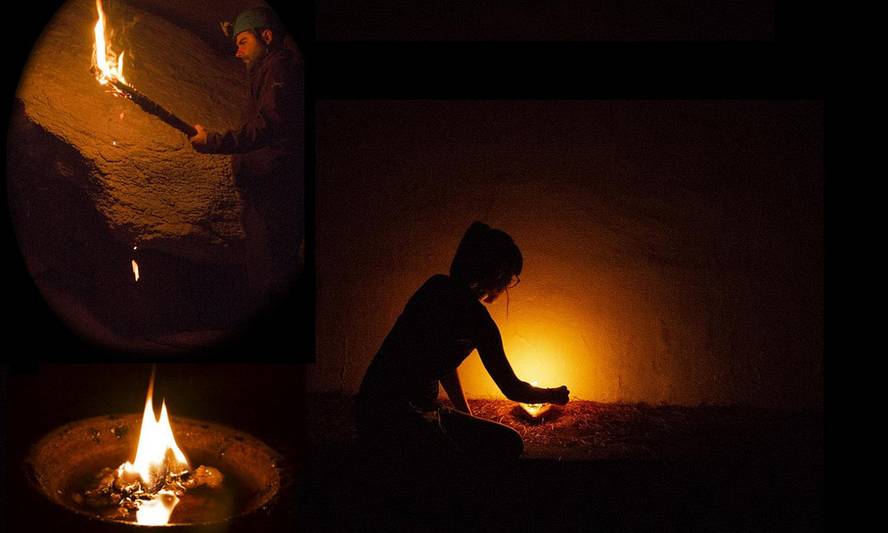
Experimentally investigate paleolithic lighting systems
Based on the evidence collected in the caves containing posters, an experimental research was conducted to describe the systems they used to illuminate the caves. The research, directed by archaeologists Marian Medina Alcaide and Diego Garate Maidagan of the IIIPC of prehistoric studies of Cantabria, has been published in the journal PLOS ONE.
The Palaeolithic humans, to make murals in the darkness of the caves, had to be able to light the fire and transport it from one place to another. The researchers have collected remains of the illumination of the caves of Atxurra (Berriatua) and Nerja (Malaga), comparing them with those of Lascaux (Dordogne) and Chauvet (Ardèche). Remains of three lighting systems have been found: torches, bottom-fires and portable grease lamps. They have also researched materials for their elaboration, and have discovered that in Atxurra, for example, they used the oak and the ass.
With this information, lighting systems have been experimentally tested in the cave of Isuntza I (without archaeological value). Among other things, dry ass has been used for the manufacture of torches; sandstone for the manufacture of lamps, using as fuel the bone marrow of the bovids and resin; and the ass and oak for the elaboration of the lower fire. Through the experiments it was confirmed that each system has its own characteristics and that they used them according to the needs.
In addition to the characteristics of lighting systems, research has included those of the cave (such as oxygenation and air currents) and human vision. Thus, it has been concluded that the best lighting is achieved by the joint use of two systems, such as torches and grease lamps. In addition, they have shown that with these systems they obtained hot light, so they saw some colors better than others, especially red, orange and yellow.
In addition, they calculated the effort they had to make to have light in the bottom of the caves, that is, the amount of materials they needed and the displacements they were going to make. In short, it required rigorous planning. Research has therefore served to clarify the main characteristics of enlightenment and to better understand the human beings of the time.





